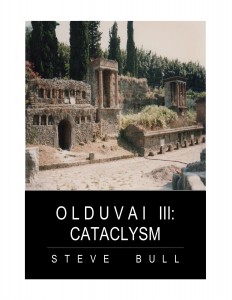Home » Posts tagged 'overshoot'
Tag Archives: overshoot
The Bulletin: October 8-14, 2025
The Bulletin: October 8-14, 2025 This past week’s articles of interest… CLICK HERE If you’re new to my writing, check out this overview. Thermodynamic drag It’s Already Started: The Oil Crisis They Said Would Never Happen As Colorado River Nears Collapse, It Faces Leadership, Transparency ‘Crisis,’ Environmentalists Warn – Inside Climate News From Fear to […]
The Bulletin: July 23-29, 2025
The Bulletin: July 23-29, 2025 This past week’s articles of interest… CLICK HERE If you’re new to my writing, check out this overview. Brace For Soaring Electricity Bills: Biggest US Power Grid Sets Power Costs At Record High To Feed AI | ZeroHedge Plant, Persist, Prevail: Collective Grower Wisdom (#1) Iran’s President ‘Ready’ For War […]
The Bulletin: July 10-16, 2025
The Bulletin: July 10-16, 2025 This past week’s articles of interest… CLICK HERE If you’re new to my writing, check out this overview. Why the world needs renewable food – by Julian Cribb ‘Green’ China Runs On Dirty Coal | ZeroHedge Doug Casey on Why the Military-Industrial Complex Always Wins Three Choices, None Good Court […]
Today’s Contemplation: Collapse Cometh CCVI–A ‘Great Simplification’ Is On Our Doorstep.
Today’s Contemplation: Collapse Cometh CCVI A ‘Great Simplification’ Is On Our Doorstep. stock.adobe.com CLICK HERE If you’re new to my writing, check out this synopsis. I have been wanting for some time to connect in an aggregate fashion a few of the ‘texts’ I’ve been exposed to over the past two decades and that have […]
The Bulletin: March 13-19, 2025
The Bulletin: March 13-19, 2025 CLICK HERE The Great Gas Pipeline Caper of 2025 – by Terry Cowan BlackRock CEO Says American ‘Practicalism’ Can ‘Make Energy Great’ | The Epoch Times Some Psychology for Responding To a World in Chaos Can We Feed Ourselves Just out of Our Vegetable Gardens? The Lost Art of […]
The Bulletin: February 6-12, 2025
The Bulletin: February 6-12, 2025 CLICK HERE The Crises Yet To Come When efficiency becomes a problem: Jevons Paradox in the Age of AI – Conhecimento Hoje Supercharging the Predicaments We Face Please, be a NIMBY – by Elisabeth Robson Nuclear Fusion Is Just More Bullshit Break the Consumption Cycle Why pervasive media propaganda […]
The Bulletin: January 2-8, 2025
The Bulletin: January 2-8, 2025 End Of An Era: Ukraine Halts Transit Of Russian Gas To Europe | ZeroHedge By Charles & Chris: Doomers Anonymous We need dramatic social and technological changes’: is societal collapse inevitable? | Climate crisis | The Guardian The System’s Self-Destruct Sequence Cannot Be Turned Off Seeing overshoot – by Elisabeth […]
Today’s Contemplation: Collapse Cometh CL–Carbon Tunnel Vision and Resource/Energy & Ecological Blindness, Part 2
Today’s Contemplation: Collapse Cometh CL–Carbon Tunnel Vision and Resource/Energy & Ecological Blindness, Part 2 September 20, 2023 (original posting date) Mexico (1988). Photo by author. As I stated at the close of Part 1: “We have, as a rationalising but not rational story-telling ape, created myths about our place in the universe and how we have […]
Today’s Contemplation: Collapse Cometh CXLIX–Carbon Tunnel Vision and Resource/Energy & Ecological Blindness, Part 1
Today’s Contemplation: Collapse Cometh CXLIX–Carbon Tunnel Vision and Resource/Energy & Ecological Blindness, Part 1 September 7, 2023 (original posting date) Mexico (1988). Photo by author. In my attempt to ‘market’ the article compilation that was recently published, I joined a couple of Facebook Groups in order to post about the document. I subsequently posted my last Contemplation (that […]
The Bulletin: August 16-22, 2024
The Bulletin: August 16-22, 2024 “Ubiquitous” – Scientists Discover That the Oceans Release Microplastics Into the Atmosphere Why large projects fail. Especially Renewable Energy | Peak Everything, Overshoot, & Collapse Global Debt Hits A New High Of $315 Trillion | ZeroHedge Big Tech Uses More Electricity Than Entire Countries | ZeroHedge Western Battle Tanks Are […]
Today’s Contemplation: Collapse Cometh CLXXXIV– ‘Renewables’: The Great ‘Solution’ (NOT)
Knossos, Crete (1988). Photo by author. ‘Renewables’: The Great ‘Solution’ (NOT) I’ve been very, very slowly reading a paper by archaeologist Joseph Tainter (Problem Solving: Complexity, History, Sustainability Population and Environment, Sep., 2000, Vol. 22, No. 1, pp. 3-41) that I will comment upon and summarise in a few weeks. In the meantime, I thought […]
Today’s Contemplation: Collapse Cometh CLXXXIII–Complexity and Sustainability
Today’s Contemplation: Collapse Cometh CLXXXIII–Complexity and Sustainability I believe that in many ways the past is a prologue to our future. Every experiment our species has attempted in the development of complex societies (from small to large ones) has eventually ‘failed’ to sustain the systems that make them complex and simplification/decline/collapse has followed. Regardless of […]
June 29, 2024 Readings
Attempting a new format (that I will probably fiddle with for a week or so) for sharing articles of interest. Below you will find a number of links to those articles. Note that I may add a few before the day ends so check back. Hope this works for everyone… First-Responder Trauma: A New Framework […]
Today’s Contemplation: Collapse Cometh CLXXIX–Archaeology of Overshoot and Collapse
Today’s Contemplation: Collapse Cometh CLXXIX–Archaeology of Overshoot and Collapse It’s been a few months since I last posted a Contemplation. There are a variety of reasons for this. I’ve been ‘distracted’ by the preparations in my gardens for the upcoming growing season. The unseasonably warm weather here north of Toronto allowed me to get outside […]



